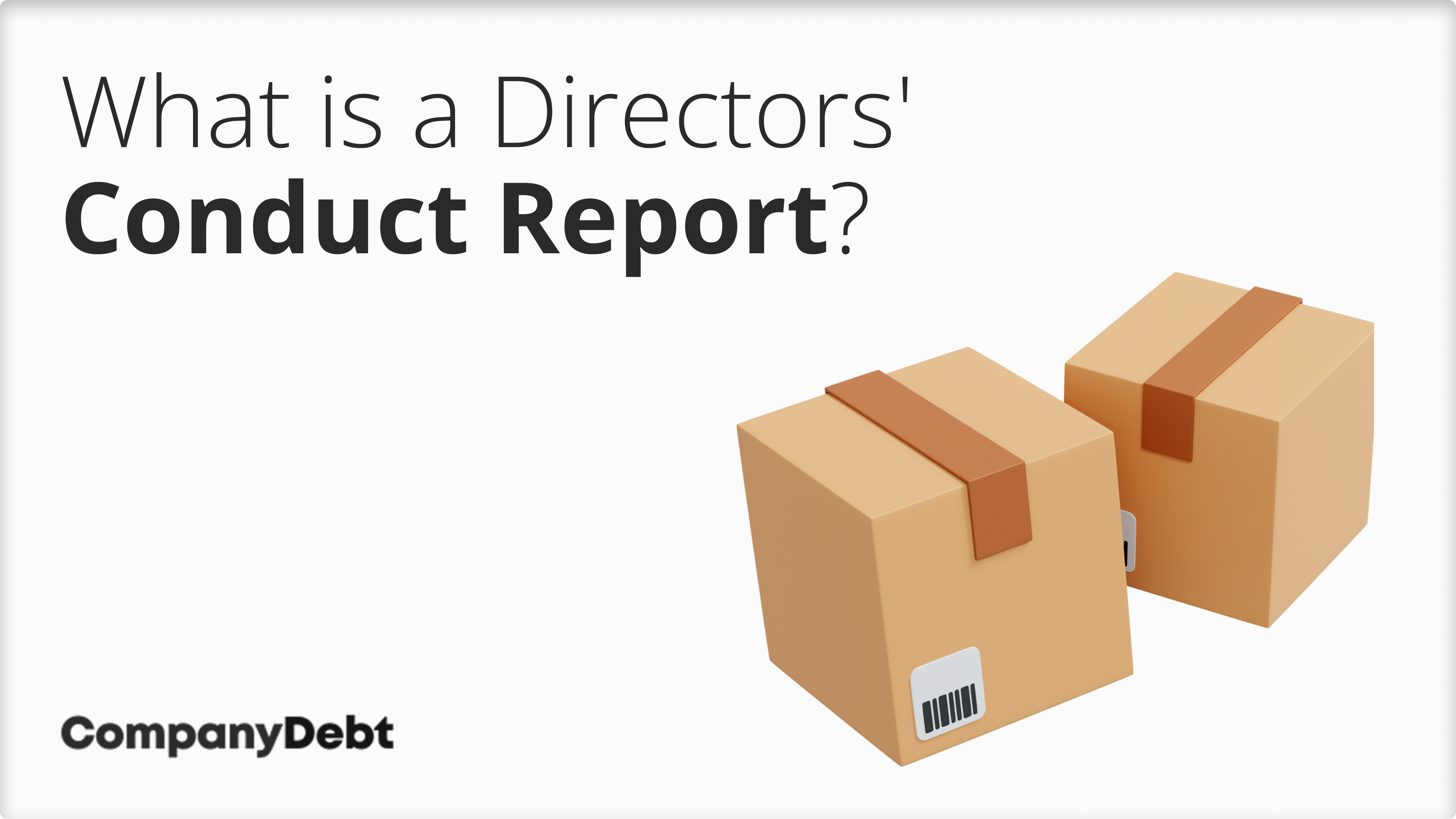
What is a Directors’ Conduct Report?
When a limited company faces insolvency and enters liquidation, it’s not just the end of a business but the beginning of a meticulous review process, particularly of the directors’ actions leading up to the insolvency. A critical component of this process is the Director’s Conduct Report.
This report is vital for directors and the broader business community. It assesses responsibility and, where necessary, initiates further action against directors who may have failed in their duties.

What Triggers a Director’s Conduct Report?
A Director’s Conduct Report is triggered as a statutory requirement when a limited company goes into liquidation. This compulsory measure kicks in to ensure that an in-depth investigation is conducted into the company’s demise, focusing specifically on the directors’ actions in the lead-up to the insolvency event.
The Investigation Process Explained
The investigation process leading to a Director’s Conduct Report meticulously examines the actions of company directors for any wrongful or unlawful trading and decisions that may have disadvantaged creditors before the liquidation.
Wrongful trading occurs when the directors of a company continue business operations with the knowledge that the company is unable to avoid insolvency.
Upon identifying such issues, the insolvency practitioner compiles these findings into the Director’s Conduct Report. This report is crucially forwarded to the Insolvency Service, representing the Secretary of State, to evaluate whether further actions, including civil or criminal proceedings, are warranted based on the report’s contents.
>>Read our full article on Insolvent Company Investigations
What Does a Director’s Report During Insolvency Contain?
A director conduct report typically includes:
- Basic details about the company, including its name, registration number, and principal place of business.
- Names and addresses of current and past directors during the relevant period leading up to insolvency.
- A snapshot of the company’s financial situation, including assets, liabilities, turnover, and net worth, highlighting changes and trends that may have led to insolvency.
- A narrative of significant events or decisions that contributed to the company’s financial decline, including market conditions, loss of major clients, or poor financial management.
- Descriptions of measures undertaken by directors to address financial difficulties, such as cost-cutting, restructuring, seeking new investment, or negotiating with creditors.
- Detailed information on the company’s debts, including creditor names, amounts owed, and any security granted.
- Details of any assets sold or disposed of prior to insolvency, including the rationale and terms of these transactions.
- Information on the company’s compliance with legal and regulatory obligations, including any legal disputes, penalties, or breaches of regulations.
- An assessment of the directors’ conduct and their adherence to duties under corporate governance and insolvency law, potentially including any actions that could be seen as wrongful or fraudulent trading.
- An analysis of the company’s potential for recovery or restructuring, if applicable, and the directors’ views on the feasibility of continuing operations.
The Three Types of Director’s Conduct Reports Explained
During the liquidation process, there are three distinct types of Director’s Conduct Reports that an insolvency practitioner may prepare, each with different implications:
- D2 Final Report: Issued when the investigation concludes without finding any misconduct, this report effectively ends the inquiry into the directors’ actions.
- D2 Interim Report: This report is generated if the insolvency practitioner requires more time to complete their investigation, indicating that further scrutiny is ongoing.
- D1 Report: Prepared when the investigator finds significant issues with the directors’ conduct that contributed to the company’s failure. This report can lead to actions by the Insolvency Service, including director disqualification proceedings.
Understanding the type of report issued is vital for directors, as it informs them of their standing and the potential legal implications they may face.
How Long Does the Insolvency Service Have to Respond?
The Insolvency Service has a two-year time frame to proceed if they feel there is a reasonable case for director disqualification. A good deal of that timeframe will be spent collecting evidence and contacting the relevant company directors to ensure their information is verifiable.
What Are the Potential Consequences of a Director’s Report in Liquidation?
The director’s report has significant implications for all stakeholders involved, affecting the directors personally, the company’s creditors, and the overall outcome of the liquidation process.
Potential consequences are as follows:
- Director Liability: If the report reveals that directors engaged in wrongful trading, they may be held personally liable for the company’s debts. This could lead to financial penalties, compensation orders, or even personal bankruptcy in severe cases.
- Disqualification: The findings can lead to director disqualification for a period ranging from 2 to 15 years under the Company Directors Disqualification Act, (CDDA) 1986. Disqualification prevents an individual from acting as a director of any company, imposing a significant restriction on their professional activities and reputation.
- Criminal Proceedings: Directors may face criminal charges in cases of fraudulent trading or serious breaches of duty, leading to fines or imprisonment. Such outcomes are more likely when there is evidence of intent to defraud creditors or other fraudulent activities.
- Creditor Impact: The report can influence the distribution of assets to creditors. If it’s found that directors made preferential payments or undervalued transactions, creditors may receive a greater share of the assets or compensation through legal actions against the directors.
- Reputational Damage: Public disclosure of mismanagement or failure to comply with legal obligations can tarnish personal and professional reputations, affecting future business ventures.
Get a Free Consultation
Are you facing challenges with company debt or insolvency? Don’t navigate the complexities alone. Contact us today for a free consultation and expert guidance.
Phone: 0800 074 6757
Email: info@companydebt.com
Live Chat: Use the live chat at the bottom of the screen to connect with our team instantly.
FAQs about the Directors Conduct Report in Liquidation
What can directors do if they disagree with the findings of the Director’s Conduct Report?
Directors should seek legal advice if they disagree with the report’s findings. They may have the opportunity to provide further evidence or clarification to the Insolvency Service or, if necessary, challenge the findings legally.
Can a Director’s Conduct Report lead to immediate legal action against directors?
While the report itself is an assessment and recommendation, it can prompt legal action by the Insolvency Service or creditors, especially if it reveals significant misconduct or fraud.
Are former directors of a company also scrutinised in the Director’s Conduct Report?
Yes, the actions of both current and former directors within a specific timeframe before the company’s insolvency are examined as part of the investigation.










